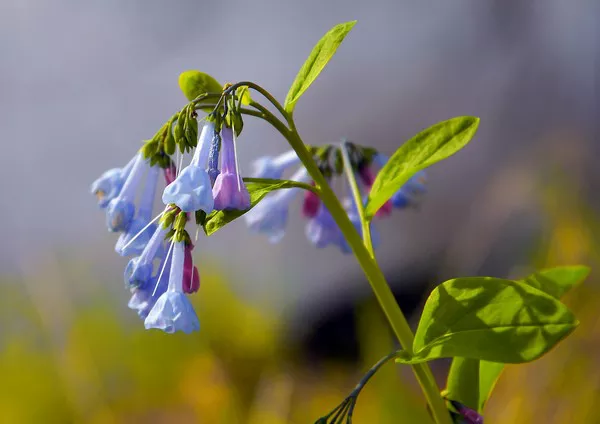Wildflowers, with their vibrant colors and natural beauty, have always held a special place in our hearts. Whether you’re looking to enhance your garden or restore a piece of native habitat, planting wildflower seeds is a rewarding endeavor. But, as with any gardening project, patience is essential.
Understanding Wildflower Seeds
Wildflower seeds come in a myriad of shapes and sizes, each with its unique characteristics and requirements for germination and growth. It is essential to understand that wildflower seeds are not like traditional garden seeds. They are often adapted to specific conditions in their native habitats, making them diverse and versatile, but also challenging to cultivate.
Germination Factors
The time it takes for wildflower seeds to grow depends on various factors, with germination being the initial and most critical stage. Germination time can vary significantly from one species to another, with some wildflowers sprouting within a few days, while others may take several weeks or even months. Several factors influence germination rates, including:
Seed Type: Different wildflower species have distinct germination requirements. Some seeds need cold stratification, which mimics winter conditions, while others require scarification, which involves breaking through the seed coat. Understanding the specific needs of your chosen wildflower seeds is crucial for successful germination.
Temperature: Soil temperature plays a crucial role in germination. Some wildflower seeds require warm soil to germinate, while others thrive in cooler conditions. Understanding the temperature preferences of your selected seeds is essential for proper germination.
Moisture: Adequate moisture is essential for seed germination. Some wildflower seeds need consistent moisture, while others may tolerate periods of drought. Maintaining the right level of moisture is crucial to support germination.
Light: Some wildflower seeds require exposure to light for germination, while others prefer darkness. Understanding the light requirements of your chosen seeds is key to their successful growth.
Wildflower Germination Times
Wildflower germination times can vary greatly. Here are some examples of common wildflower species and their approximate germination periods:
California Poppy (Eschscholzia californica): California poppy seeds typically germinate within 10 to 20 days, making them one of the quicker wildflowers to establish.
Black-Eyed Susan (Rudbeckia hirta): Black-eyed Susan seeds usually germinate within 7 to 30 days, depending on factors such as temperature and moisture.
Bluebonnet (Lupinus spp.): Bluebonnet seeds may take a bit longer, ranging from 10 to 90 days, largely depending on the specific species and conditions.
Indian Blanket (Gaillardia pulchella): Indian blanket seeds often germinate within 10 to 30 days, provided that the right conditions are met.
Milkweed (Asclepias spp.): Milkweed seeds can take 7 to 21 days to germinate. However, they are crucial for supporting pollinators like monarch butterflies, making them worth the wait.
Wildflower Establishment and Growth
After successful germination, the next phase is the establishment and growth of your wildflower garden. During this stage, the young plants develop into the colorful and vibrant display you envisioned.
Factors Influencing Establishment and Growth
Several factors influence how long it takes for wildflowers to establish and grow:
Soil Quality: Wildflowers thrive in well-draining soil with good aeration. The quality of your soil can greatly impact the growth rate of your wildflowers. Amending the soil with organic matter and nutrients can help create an ideal environment for these plants.
Competition: Weeds and other plants can compete with your wildflowers for nutrients, water, and space. Proper weed control and maintenance are crucial to ensuring your wildflowers can establish themselves and grow unimpeded.
Climate and Season: The climate in your region, as well as the season in which you plant your wildflower seeds, can affect growth rates. Spring and fall are generally the best times for planting wildflower seeds, as the weather conditions are more favorable for germination and establishment.
Maintenance: Regular maintenance, including watering, mulching, and occasional fertilization, can support the growth of your wildflowers. Neglecting maintenance can slow down the process.
Wildflower Growth Rates
The growth rates of wildflowers can vary widely, even among plants of the same species. However, in ideal conditions, you can expect wildflowers to progress as follows:
1 to 2 months after germination: Wildflowers typically establish their root systems and produce the first set of true leaves.
2 to 4 months after germination: During this stage, most wildflowers will start producing flower buds and, eventually, blossoms.
4 to 6 months after germination: By this time, your wildflower garden should be in full bloom, showcasing its vibrant colors and attracting pollinators.
Subsequent years: Wildflower gardens can return and flourish in subsequent years if they are allowed to self-sow. You may notice a mix of annual and perennial species in your garden.
Conclusion
Planting wildflower seeds is a labor of love that rewards patience and attention to detail. While the germination and growth rates of wildflowers can vary based on species, environmental conditions, and maintenance, the vibrant and natural beauty they bring to your landscape is well worth the effort.
Remember that wildflowers not only beautify your garden but also provide essential habitat and food for pollinators, wildlife, and beneficial insects. By understanding the unique requirements of your chosen wildflower species and taking care to create the right conditions, you can enjoy a stunning and sustainable wildflower display that will flourish year after year. So, if you’re wondering how long it takes for wildflower seeds to grow, remember that with the right care and attention, the wait is always worth it.


